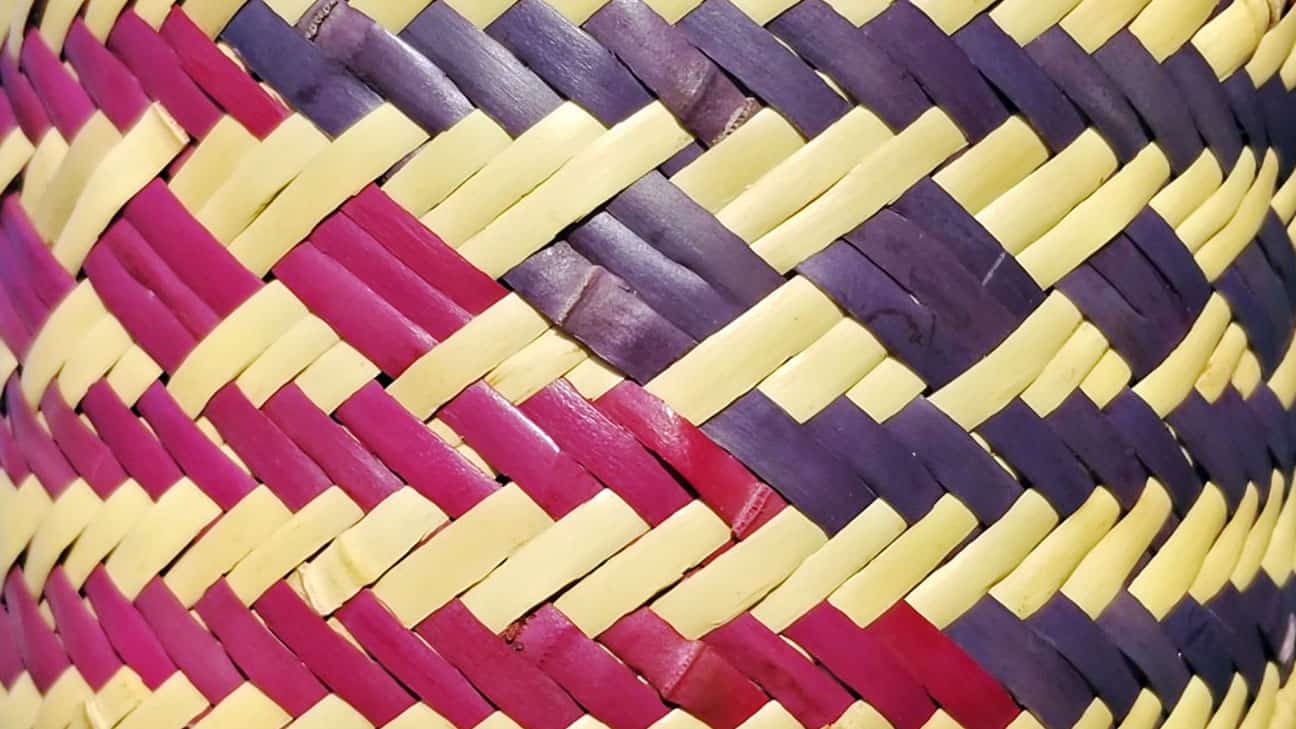
For centuries, the diamond pattern has appeared on Choctaw basketry. These diamonds represent sinthullo, <i>the supernatural snake</i>, an animal known to English-speakers as the eastern diamondback rattlesnake.
Takkon Hvshi: Peach month is bountiful time of the year
Iti FabvssaPublished August 1, 2019This article is part of a series entitled “A Year in the Life.” Focusing on the time period around AD 1700, this series follows the traditional Choctaw calendar through a year, with each article providing a glimpse of the activities that our ancestors were up to during each month. This information is excerpted from a book, soon to be published by the Choctaw Nation, which is entitled “Choctaw Food: Remembering the Land, Rekindling Ancient Knowledge.”
Takkon Hvshi, Peach Month in the Choctaw calendar, is roughly equivalent to August. This time of year brought continued heat and humidity, but also more opportunity for harvesting foods.
The month’s name may refer to the peaches introduced into the Choctaw homeland by the Spanish in the 1500s. Conversely, it may refer to the old Choctaw name for native plums. Some varieties, such as the Mexican Plum, ripen in late summer. In the early 1700s, both plums and peaches were gathered from natural areas and from orchards planted between houses.
A number of other fruits ripened during this season as well. Choctaw communities gathered crabapples from August through September. Pawpaws were harvested in late summer. August is also when the grape harvesting season began. Grapes were harvested from vines growing between Choctaw houses, and also in areas outside the villages. Grapes harvested in the warm season which didn’t get eaten quickly were stored by drying them into raisins on the stem.
Different Choctaw traditional foods are designed to take advantage of the corn at its varying stages of ripeness. By July, and especially August, much of the corn crop would be entering the roasting stage – where the kernels are starting to become firm, but are not yet fully dry. Roasting ears were bulk processed by harvesting and shucking them, digging a long trench in the ground, filling it with hot coals, suspending a pole of green wood lengthwise over the trench a short distance off the ground, and propping one end of the ears of corn against the pole to roast over the hot coal.
When one side of the ears roasted, they were carefully turned to roast the other side. Once cooled, the ears of roasted corn could be eaten as they were. More often, the kernels were shucked from the ears and allowed to dry for storage.
Being roasted, these kernels would be easier to process into food than the later-harvested corn that would only be dried. Some of the kernels of roasted corn were prepared directly into special dishes, such as bota kapvssa (an instant cornmeal soup enjoyed by travelers).
Rather than roasting, however, most of the corn ears were left on the stalks through the month. These stalks were sometimes bent over, allowing the ears to dry in preparation for the main harvest, while giving them some protection from the weather and the birds.
The beans growing on vines too high to reach were left in their pods to dry in the late summer sun. Meanwhile, the maturing squash crop rested on the ground under the canopy of leaves.
Such a scene was not only bountiful to people, but also to hungry animals. For centuries, the diamond pattern has appeared on Choctaw basketry and pottery and, in later times, it would become a common decorative element on clothing and in beadwork.
These diamonds represent sinthullo, the supernatural snake, an animal known to English-speakers as the eastern diamondback rattlesnake. The Choctaw people respected this animal, not only for its lethality and because it gives a warning before it strikes, but also because it helped remove hungry rodents from agricultural fields.